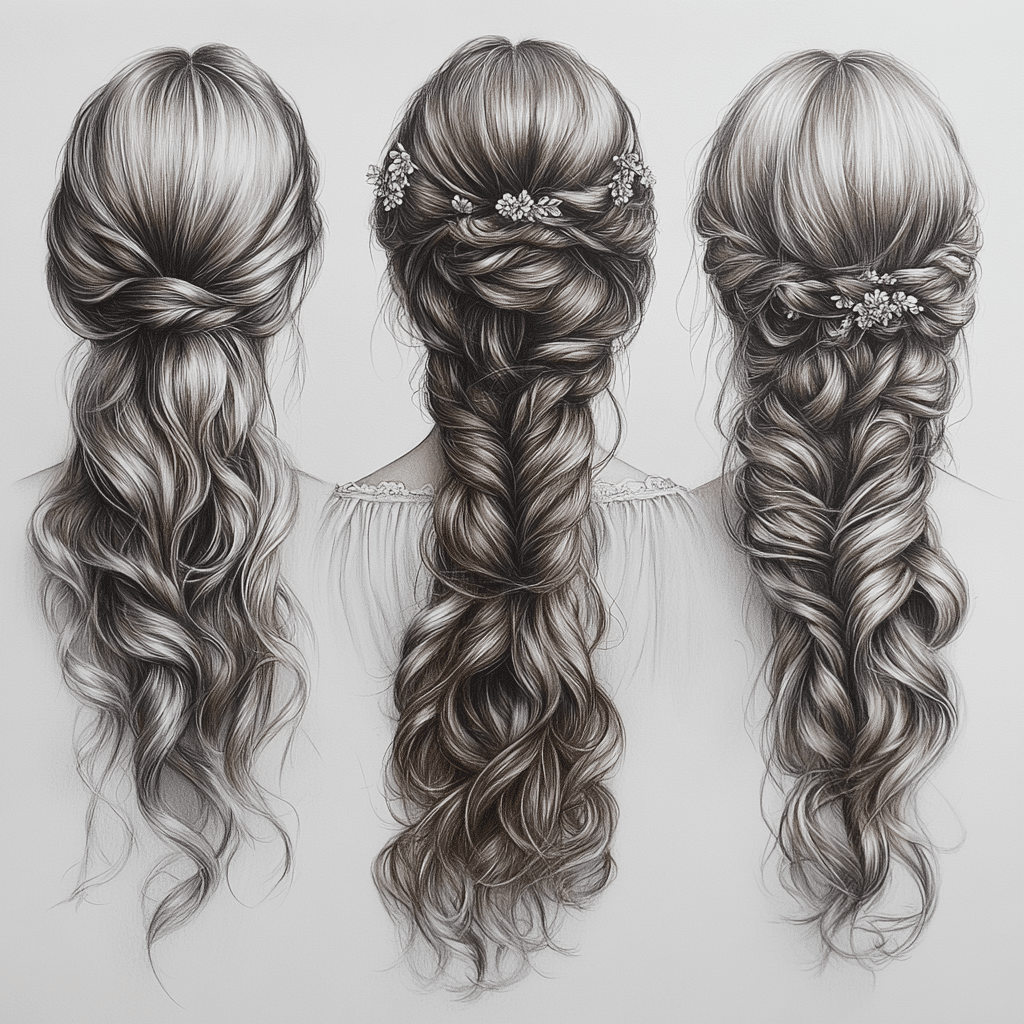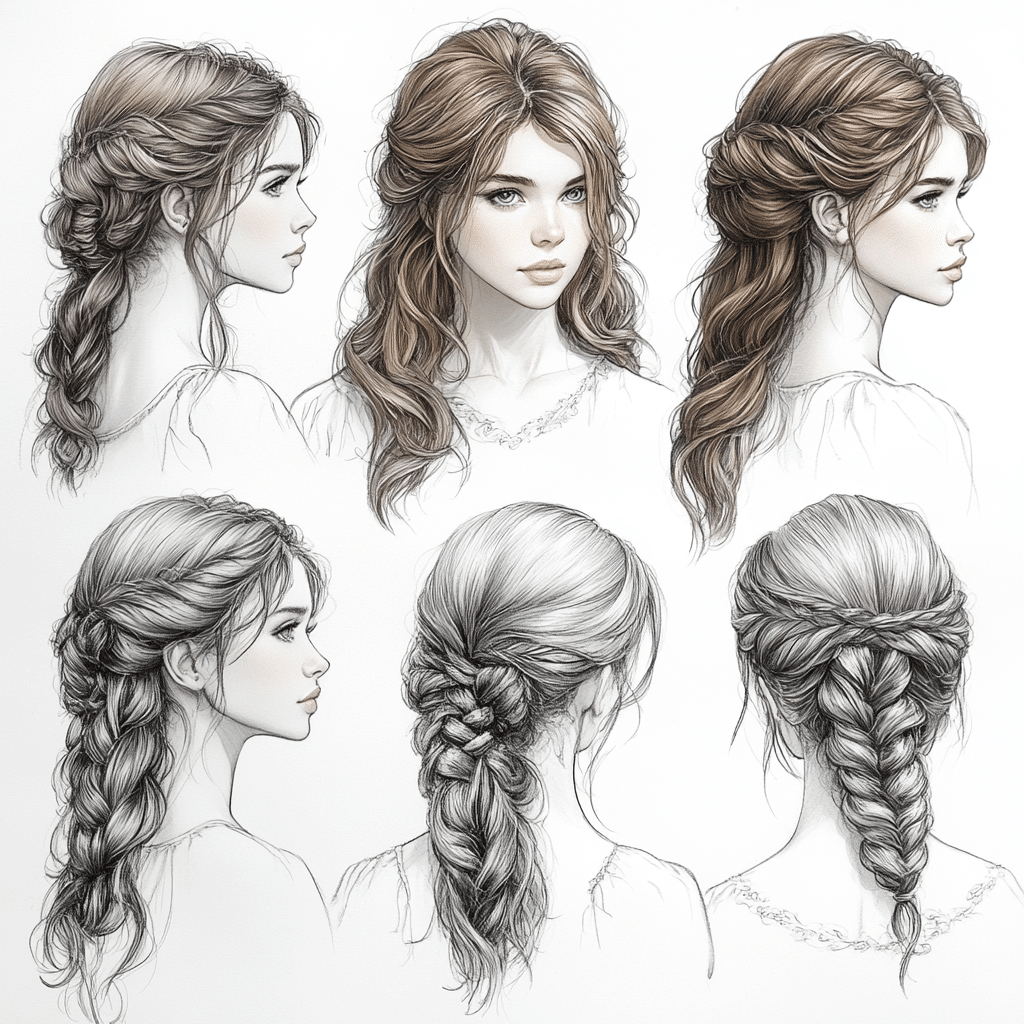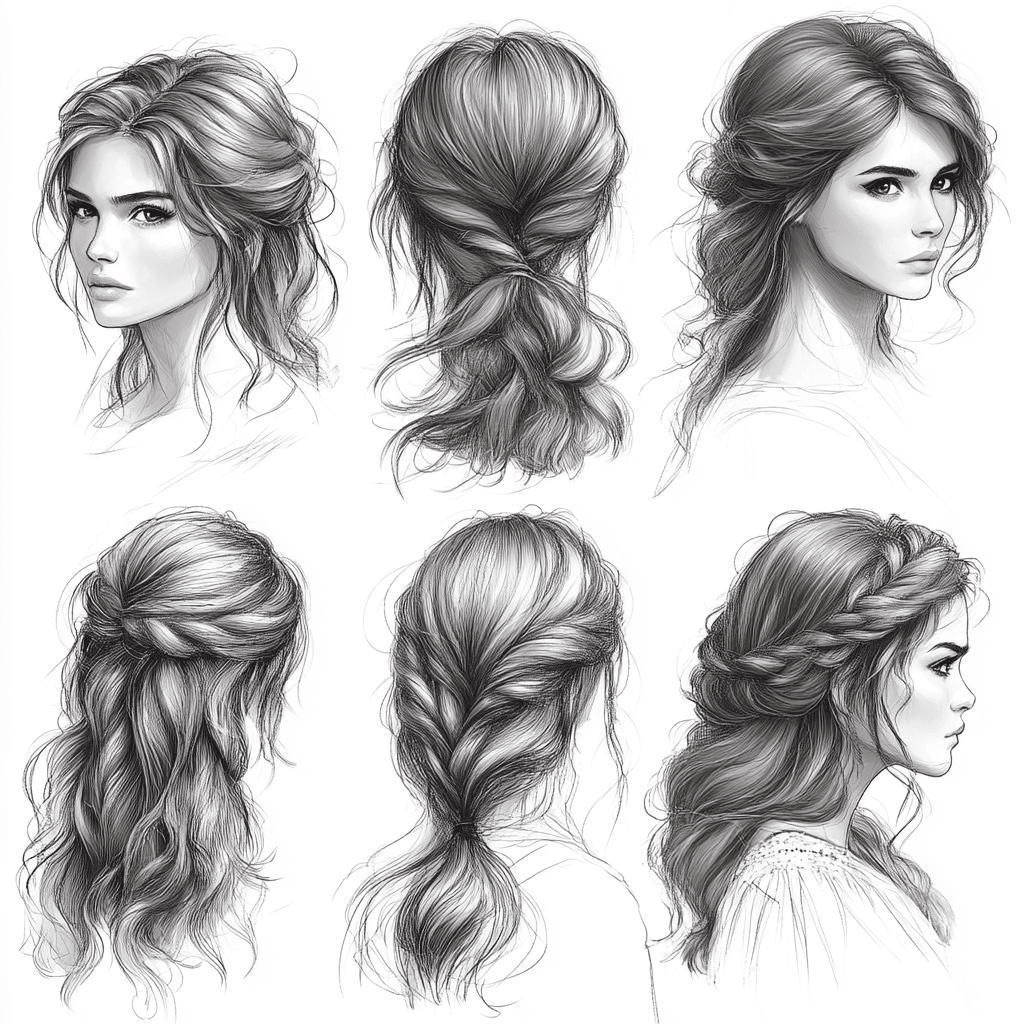Creating hair that truly captivates can be quite the challenge for artists, whether they are just starting out or have years of experience under their belts. Using effective hair drawing references is fundamental to artistic expression. Understanding the intricacies of hair allows artists to breathe life into their illustrations, making characters feel more real and dynamic. This article dives deep into the essence of hair drawing references, offering techniques and insights for artists aspiring to refine their craft through stunning artistry.

The Importance of Hair Drawing Reference in Artistic Expression
Art is all about communication, and hair often symbolizes elements of personality, culture, and emotion. When artists incorporate hair drawing references into their work, they not only enrich their pieces but also add layers of meaning. For instance, a flowing mane can suggest freedom and beauty, while tightly styled hair might evoke professionalism or rigidity. By mastering various hair techniques and references, artists can evoke feelings and tell stories without saying a single word.
Hair is a complex structure composed of varying textures, colors, and styles that change across cultures and periods. Creatively interpreting these elements through drawing can present a major opportunity for innovation. Artists looking to elevate their skills will benefit immensely from understanding these nuances—both in their technical ability and in their capacity to convey deeper meanings. The dedicated exploration of different hair styles, textures, and representations serves as both a challenge and a treasure trove for creativity.
Delving into the world of hair drawing reference is more than an artistic pursuit; it’s a journey of personal growth and discovery for an artist. As creativity flourishes, artists uncover their voice and style, showcasing their understanding of anatomy, texture, and emotion through the way they depict hair.

Top 7 Hair Drawing Reference Techniques for Stunning Artistry
Creating realistic and captivating hair in art can challenge even the most experienced artists. To help cultivate your skill set, here are seven essential techniques for utilizing hair drawing references effectively:
Don’t lock yourself in with just one style or color. Grab a range of hairstyles, textures, and colors to broaden your perspective. Websites like Unsplash and Pexels are great resources that offer high-quality images featuring diverse hairstyles that can inspire your artistry.
Understanding how hair flows is crucial for adding realism. Look for references that showcase different angles and movements, such as wind-blown tresses or sleek, styled looks. This helps create a sense of movement in your artwork. For instance, studying the work of Hairstylist Jen Atkin, known for her work with high-profile clients like the Kardashians, can provide inspiration for depicting dynamic hair.
Hair has a reflective quality; understanding light sources can add depth to your drawings. Investigate how hairstyles catch light by using references that display shiny, luxuriously groomed locks. Brands like Aveda emphasize beautiful hair in their marketing, often showcasing images that demonstrate compelling interactions with light.
Employ layering techniques to create depth. Utilizing cross-hatching and varying line weight effectively simulates texture and thickness. Watching time-lapse tutorials on platforms like YouTube from artists like Jazza or Marc Brunet can reinforce your learning with visual examples of these methods.
Exploring various drawing mediums—colored pencils, charcoal, or digital tools—will provide you with fresh perspectives. Different mediums deliver unique approaches to hair drawing. Explore tools like Adobe Fresco and Procreate for fantastic digital art capabilities that help replicate the flow and texture of hair beautifully.
Real-world observations can dramatically enhance your skills. Attending fashion shows or popping into barber shops for live examples of hairstyles helps broaden your vision. Events like New York Fashion Week not only provide inspiration but also reveal current trends.
Engaging with a community of fellow artists offers invaluable insights. Platforms like DeviantArt and Instagram allow you to showcase your work and gather constructive feedback, honing your hair-drawing skills over time.
Advanced Techniques in Hair Drawing Reference
Once you’ve got the basics down, it’s time to venture into advanced techniques to take your hair drawing to the next level. Look at complex hairstyles from iconic artworks, such as the intricate locks in John William Waterhouse’s “The Lady of Shalott.” This artwork can provide inspiration on blending techniques and color palettes, while also teaching you how to convey hair as an integral part of the character’s aura.
Understanding the cultural significance of hair can also add depth. Different hairstyles reflect a myriad of cultural narratives and periods. Engaging with studies around hair can allow you to create context in your drawings, enriching both your artistic repertoire and the viewer’s experience.
Get inspired by contemporary artists who are redefining character-driven artwork. Their interpretations of hair can present new ways to visualize texture and movement. Engaging with figures like Kasey Golden, known for her vibrant character design and captivating hair illustrations, will help you understand how to tell a story through hair, blending artistry with narrative depth.
Practical Tips for Effective Hair Drawing Reference
Capture photographs of friends or family sporting diverse hairstyles. Assemble a personal library that reflects unique sources, speaking to your artistic style.
Websites like ArtStation showcase skilled artists and provide tutorials and step-by-step guides on hair techniques. Learning from the best will help you apply new skills to your artwork.
Commit to consistent hair drawing exercises to build muscle memory and increase confidence. Schedule a specific time each week dedicated solely to practicing hair drawing.
Finding Your Unique Style in Hair Illustration
As your skills develop, focus on discovering your own style in hair illustration. Try whimsical designs or exaggerated textures, like the fantastical hair in Takashi Murakami’s work, unleashing your creativity. This phase of experimentation not only hones your technical ability but also strengthens your artistic voice.
Embrace the journey of exploration. This trial-and-error process cultivates your artistry through innovative techniques, inspiring you to keep evolving as an artist.
Final Thoughts on Mastering Hair Drawing References
Hair serves as a potent tool for expression and emotion in artistic creations. By integrating varied hair drawing references and techniques into your practice, you’ll enhance not only your skills but also your creative potential. Explore the myriad of ways to make hair an expressive feature in your art. The journey of mastering this crucial aspect provides a profound understanding of human expression, all while enriching your artistry.
Harness these techniques and insights to transform your artistry. The world is full of inspiration—dive in and explore the beauty of hair drawing references! Whether you’re researching artists like Kerry Condon, understanding the definitions behind computer graphics, or finding in-depth discussions about character representations like Christian Potenza, every experience adds depth to your artistic expression, equipping you for future artistic wins. Seek to push boundaries, explore more, and let your creative journey unfold.
For more information about drawing techniques and artistry, check out Gana Mas, Gay Wrestle, Gorka Suit, or get insights on trending topics like Dolar Blue hoy and games like Katana Kombat.
Hair Drawing Reference: Fascinating Facts for Artists
Importance of Hair in Art
Did you know that hair can symbolize various emotions or themes in art? Think about it—the flowing locks in a portrait might evoke a sense of freedom, while a tightly pulled back hairstyle could suggest restraint. Artists often use hair drawing references to convey deeper narratives. This art element’s significance extends beyond mere aesthetics; it adds layers to storytelling in visual creation. For a deep dive into how technology shapes our understanding of things, check out this computer definition.
Historical Styles and Cultural Significance
When you’re sketching hair, it’s wild how many styles have shifted throughout history. From the extravagant wigs of the 18th century to the natural hairstyles embraced today, each era reflects societal values. For instance, in ancient Egypt, hairstyles indicated social status. If you fancy a closer look at the cultural impact of hair, it’s fascinating to see how trends evolve. And while we’re at it, fun fact: the longest hair recorded was over 18 feet long! That’s some serious hair drawing reference right there!
Techniques for Realistic Hair Drawing
Creating lifelike hair can feel overwhelming, but it can become manageable with the right tips and tricks. For starters, remember to observe the natural flow and texture of hair in real life. Capturing light and shadow is crucial, so make sure to play with contrast. The digital age has made resources for learning these techniques more accessible than ever. You can find plenty of tutorials online, from basic to advanced methods, that can change your artistic game. Plus, knowing how a “computer” processes images can lead to improved technical skills in digital mediums. With all these resources available, you’ll have a solid arsenal of hair drawing references to elevate your artwork!




